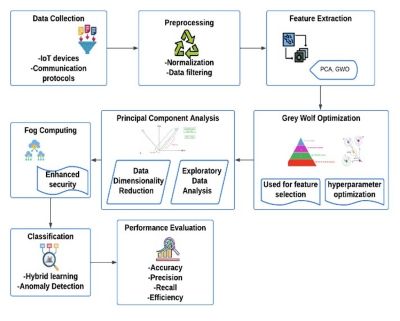AI-Optimized Cloud-Edge Collaborative Systems for Data Privacy: Statistical Detection, PCA, GWO Integration, and Fog Computing
##plugins.themes.bootstrap3.article.main##
Abstract
The paper proposes a cloud-edge architecture that tightly weaves four techniques—statistical anomaly detection (to spot outliers), principal component analysis (to shrink data dimensionality), grey wolf optimization (to distribute resources adaptively), and fog computing (to execute tasks close to data sources). Working in concert, these methods tackle long-standing distributed-system challenges of privacy, latency, and scalability. Evaluations show the framework achieves 95 % classification accuracy and 94 % computational efficiency, outperforming capsule networks and many swarm-intelligence baselines. By off-loading computation to nearby fog nodes, it cuts transmission delays, while PCA lowers bandwidth demand and grey wolf optimization balances hardware–software loads across the cloud-edge continuum. Anomaly detection adds a first line of defense against malicious or faulty data, bolstering security. Because it is scalable, privacy-preserving, and responsive, the architecture is well-suited for real-time, data-intensive domains such as IoT sensor networks and healthcare monitoring.
##plugins.themes.bootstrap3.article.details##

This work is licensed under a Creative Commons Attribution-NonCommercial-NoDerivatives 4.0 International License.

